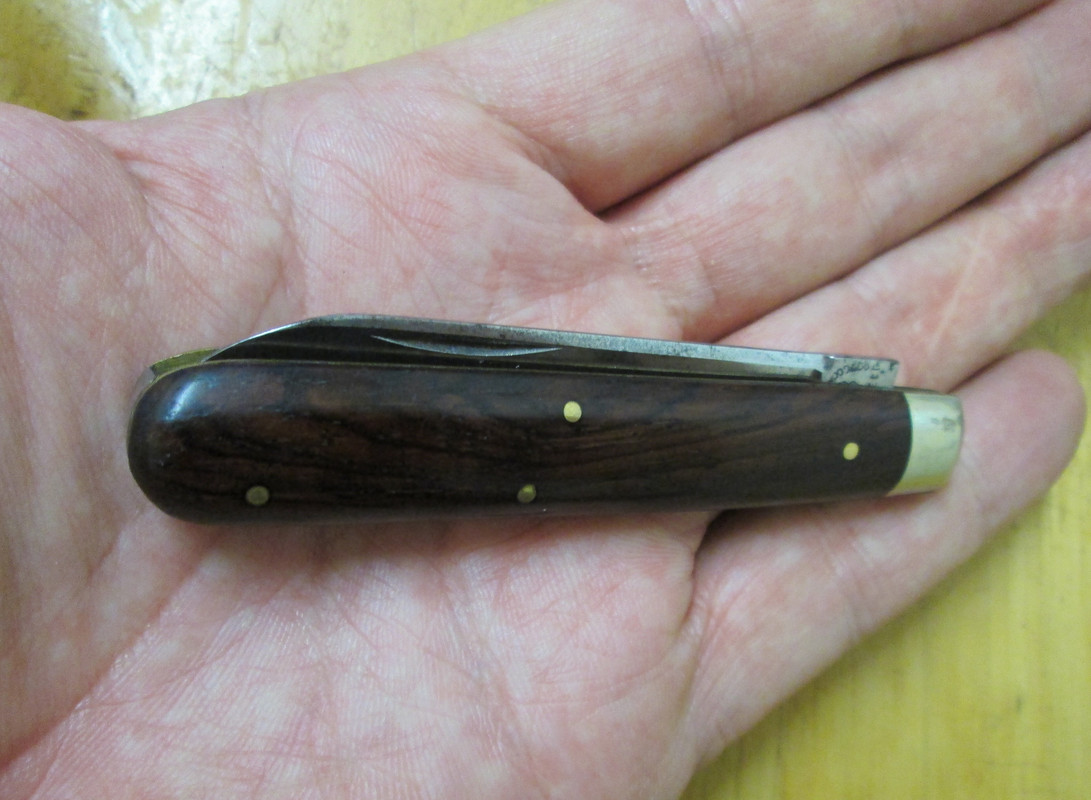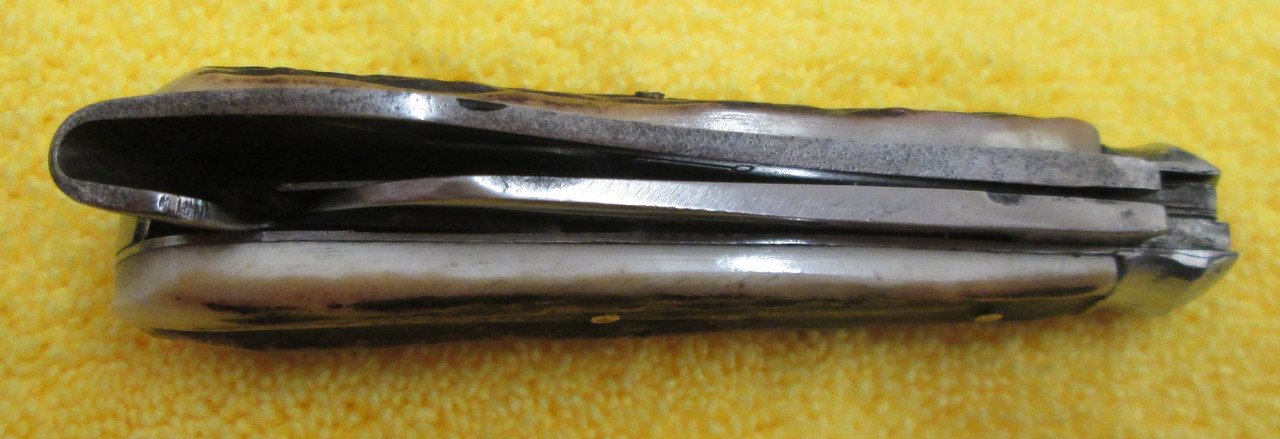- Joined
- Nov 8, 2019
- Messages
- 163
Building a civil war era US NAVY sailors rope knife for a customer and I’m curious about the backspring.
Was it usually tapered?
Was it usually tapered?
The BladeForums.com 2024 Traditional Knife is available! Price is $250 ea (shipped within CONUS).
Order here: https://www.bladeforums.com/help/2024-traditional/
That totally makes sense. Thank you for the detailed reply from Stan the man Shaw.I had an interesting discussion, with Stan Shaw, about tapered backsprings, some years ago. Stan told me that since the springs were forged, (as were the blades), when they were issued to the cutlers, as parts, the width of the springs would vary. The cutlers were always on tight-fisted piece-rates, and time was money, so this meant extra work. However, functionally, the only part of the spring, which needed to be the same width as the spine of the blade, was at the pivot. It was considerably quicker to taper the spring, with a file, than to reduce the width overall. I asked if this wouldn't make more work when the covers were fitted. He shrugged, and said, "Well, that were somebody else's job."
Can someone post pics of some tapered backsprings? I'm very interested in seeing those - I love fixed blades with a tapered tang, and have occasionally speculated about the folding equivalent, but have never seen one. Thanks in advance!I had an interesting discussion, with Stan Shaw, about tapered backsprings, some years ago. Stan told me that since the springs were forged, (as were the blades), when they were issued to the cutlers, as parts, the width of the springs would vary. The cutlers were always on tight-fisted piece-rates, and time was money, so this meant extra work. However, functionally, the only part of the spring, which needed to be the same width as the spine of the blade, was at the pivot. It was considerably quicker to taper the spring, with a file, than to reduce the width overall. I asked if this wouldn't make more work when the covers were fitted. He shrugged, and said, "Well, that were somebody else's job."
It's a different way of thinking isn't it?!That totally makes sense. Thank you for the detailed reply from Stan the man Shaw.
I will not be tapering the spring as the customer isn’t asking for a replication of an original.
Here's the knife I showed Stan, by Joseph Haywood. Natural light is long gone here, so these will have to do:Can someone post pics of some tapered backsprings? I'm very interested in seeing those - I love fixed blades with a tapered tang, and have occasionally speculated about the folding equivalent, but have never seen one. Thanks in advance!





